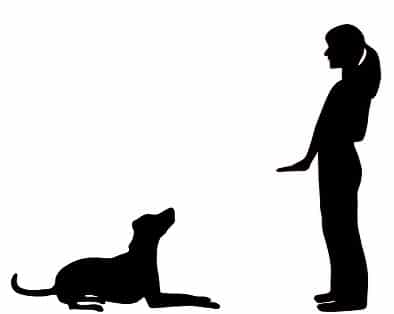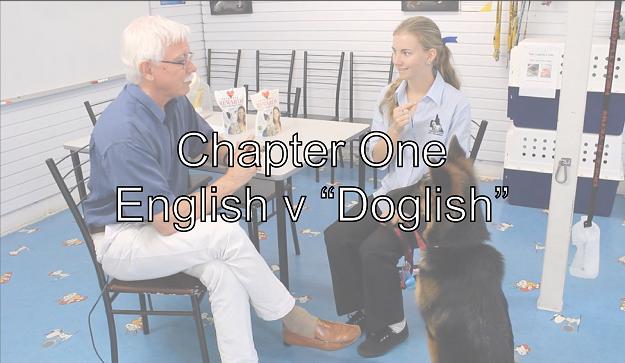The ‘Good Dog’ Voice
The first voice is the most important and it should be the most common voice you use. It is the praising ‘Good Dog’ voice. It is a high-pitched, happy and excited voice. Whenever your dog does something good, this voice is the reward that he or she should receive – along with pats, cuddles and kisses too, of course!

The Commanding Voice
The second voice is the commanding voice. This is a voice of gentle authority that you should use whenever you want your dog to do something. You don’t need to yell at a dog to get it to do normal tasks so this voice is not a hard and harsh Sargeant Major voice. This voice is used with commands such as ‘SIT’, ‘COME’, ‘STAY’ and, with that powerful command ‘LEAVE’.
However, when using the commanding voice to get your dog to perform a task, don’t use a long sentence of words. For instance, if you want your dog to sit, just say ‘SIT’. Don’t narrate the Gettysburg address.
It is important that you don’t repeat your commands more than twice. If you repeat your commands over and over again, you are only training your dog to ignore you and that you don’t expect a response. Your commands just become wallpaper and background noise.
This, for instance, is very important with the ‘SIT’ command.
After commanding ‘SIT’, if the dog sits for five seconds then you have definitely achieved your goal and the praise is justified. However, if your dog does not sit for five seconds, it is still in control and you need to issue the command again. This time though, use a food reward to lure your Pooch into the correct position.
Sometimes placing it gently in the sit position and holding it there for five seconds is effective.
The ‘Bad Dog’ Voice
The last voice is the one you should use least. It is the BAD DOG voice. I describe this as a ‘bullet to the ear’ voice. Usually it is loud, instantaneous, dark and mean – but unlike the rolled newspaper, it doesn’t hurt. Soften your voice a little if your dog is nervous, fearful or timid.
Many dog owners and trainers will use the words NO or BAD DOG or BAH to stop a bad behaviour.
You should use your ‘Bad Dog’ voice for punishing your pooch if it has done something wrong. However, here we have an important matter.
Punishment is rarely effective if it is used on its own it confuses dogs and does not show them what they should be doing.

You should only use it to distract your dog – to interrupt an unwanted behaviour. Once distracted, you can then get Poochy to do something else which is more appropriate and that you can reward. This is the essence of another technique called the ‘Bad Dog – Good Dog Routine’

Words of Wisdom
If you find you are using a punishing voice often, ring my office for advice because this shows your therapies are not working and you will be delighted at how pulsed, reward-based training creates exact behaviour change more rapidly than punishment alone.
